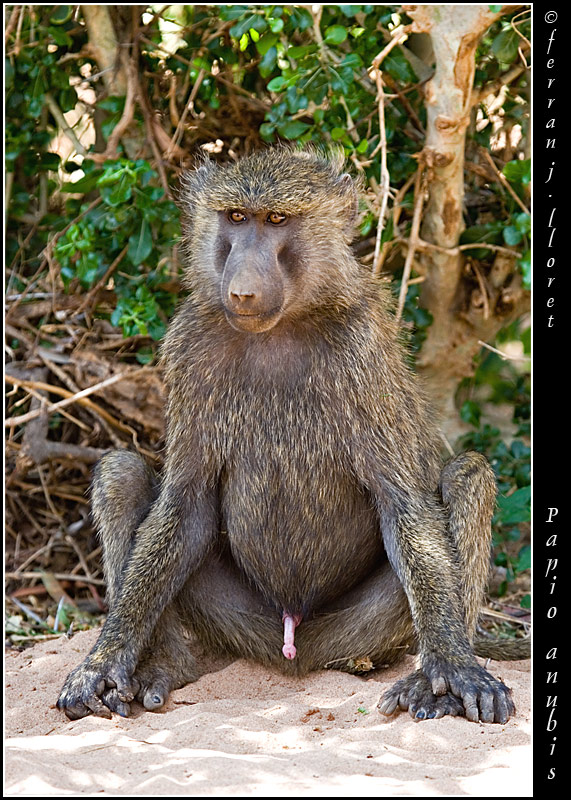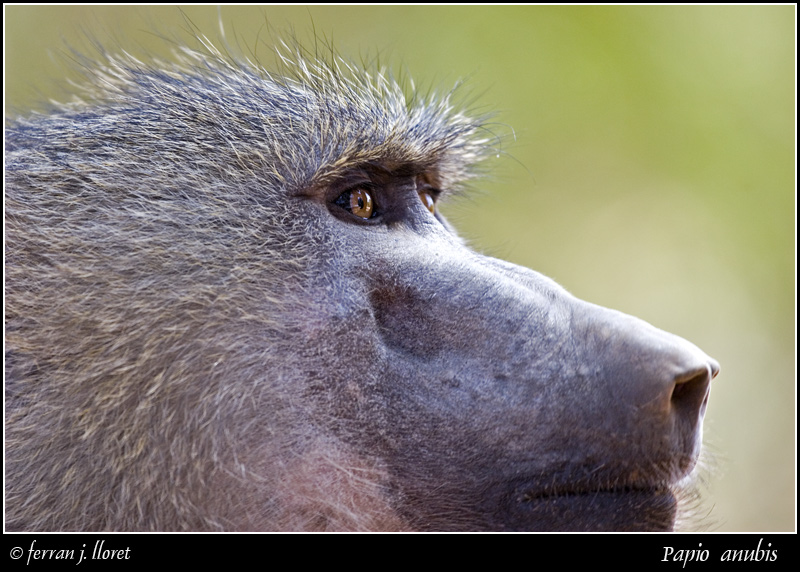The Olive Baboon (Papio anubis), also called the Anubis Baboon, is a baboon from the Old World monkey family. Its name comes from the Egyptian god Anubis, which was often represented with dog head and resembled the dog-like muzzle of the baboon.
The Olive Baboon has the largest range area of all baboons, extending south from Mali to Ethiopia and to Tanzania. Isolated populations are also in some mountainous regions of the Sahara. It inhabits savannahs, steppes and forest areas.
The skin of the Olive Baboon is olive-green colored with a black face. It lives in mixed gender social groups with complex social behaviors. It is an omnivore, eating fruits, grasses, blooms, roots, insects and small vertebrate animals. Males weigh around 25 kg and females around 14 kg, with some geographic variation in average size. The head and body of the average male measures 760 mm, with the tail adding an additional 560 mm. Females are smaller, with an average head and body measurement of 600 mm and an average tail length of 480 mm. Males have large canine teeth, whereas the teeth of the females are much smaller. Pelage is characteristically a dark, olive-gray. This overall color is produced by hairs with 1 to 2 alternating pairs of black and yellow-brown rings. Males possess a large mane, restricted to the anterior portion of the body, and grading into the shorter body hair toward the rear. Females lack a mane.
Information source
More information
This photo is taken in Samburu National reserve, in Kenya. Small modification of the original format. Juliol de 2006.
|

